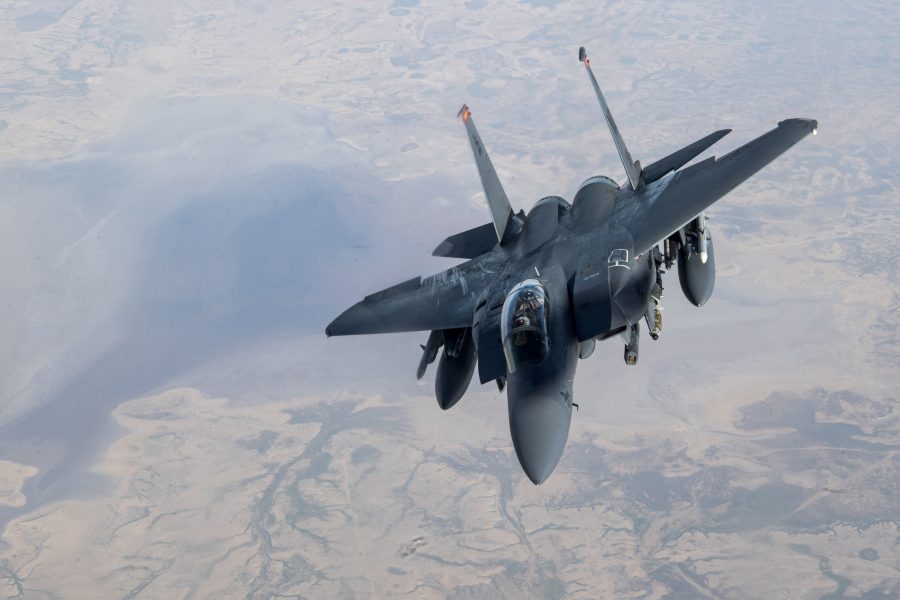The air campaign against the Islamic State group in Iraq and Syria continues, as the U.S. withdraws forces from the region and the operation has largely fallen off the public’s radar.
Combined Joint Task Force-Operation Inherent Resolve on Jan. 6 disclosed that throughout November 2020, the coalition conducted 14 airstrikes consisting of 34 total engagements in Iraq and Syria. In Iraq, this included 22 engagements resulting in 35 ISIS fighters killed and one weapons cache destroyed. In Syria, the coalition conducted seven strikes consisting of 12 engagements, though the results of those strikes were not disclosed.
The total marks a slight increase from the previous month’s total of 10 strikes, but is a sharp drop from previous years, according to OIR. In November 2019, the coalition conducted 153 airstrikes in support of the operation—a significant decrease from the 1,424 conducted in November 2018.
“CJTF-OIR and partner forces have liberated nearly 110,000 square kilometers (42,471 square miles) from Daesh. As a result, 7.7 million people no longer live under Daesh oppression,” the coalition said in a statement, using another term for ISIS. “CJTF-OIR remains committed to the enduring defeat of Daesh to improve conditions for peace and stability in the region and to protect all our homelands from the Daesh terrorist threat.”
From the beginning of the operation in August 2014 through November 2020, the coalition conducted a total of 34,941 strikes. The coalition also announced Jan. 6 that at least 1,410 civilians have been “unintentionally killed by coalition actions” since the operation began.
In November, the coalition completed 10 assessments of civilian casualty allegations, assessing that nine were not credible and one was a duplicate of a previous investigation. The coalition is still investigating 135 reports of alleged civilian casualties. The bulk of the allegations come from non-governmental organizations, such as Amnesty International and Airwars.
Air Forces Central Command previously released monthly roundups of airstrikes, refueling totals, and other air power data from both OIR and Operation Freedom’s Sentinel in Afghanistan. However, it stopped this practice in May 2020 after several years because of ongoing discussions with the Taliban. Since then, there is no publicly available data on the number of airstrikes in Afghanistan.
The Special Inspector General for Afghanistan Reconstruction reported in November that the pace of strikes has increased, but no specifics were available. President Donald J. Trump in November ordered the military to reduce the number of troops on the ground in both Iraq and Afghanistan to 2,500 in each location, and military officials have said these withdrawals are on pace to meet the Jan. 15 deadline.


